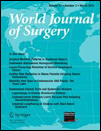Neoadjuvant Radiotherapy for Rectal Cancer: Adherence to Evidence-Based Guidelines in Clinical Practice
This work was presented at the American Society of Clinical Oncology (ASCO) Gastrointestinal Cancers Symposium, San Francisco, 2011.
Abstract
Background
Implementation of evidence-based standards is problematic. Level 1 evidence, largely predicated on the German Rectal Cancer Study, supports neoadjuvant treatment for patients with stage II/III rectal cancer. The purpose of this study was to determine to what extent this evidence has affected clinical practice.
Methods
Stage II/III rectal cancer patients undergoing surgery from 1998 to 2007 were identified in the SEER tumor registry. Variables were analyzed with SPSS software. Trends were evaluated with regression models. Survivals were compared with the log-rank test.
Results
A total of 22,136 patients were identified and 15,021 (67.8 %) were treated with adjuvant radiotherapy. A large percentage were >60 years old (64.4 %), white (83.0 %), male (58.8 %), at stage III (55.1 %), and treated with neoadjuvant radiotherapy (35.5 %). A significant increase in the use of neoadjuvant radiotherapy occurred: from 17 % in 1998 to 51 % in 2007 (p < 0.001). Scatter-plot best-fit lines for neoadjuvant and adjuvant radiotherapy intersected at approximately year 2002. Significant increases in preoperative radiotherapy were observed for all races and cancer stages (p < 0.001). On unadjusted analysis, race (p = 0.018), sex (p < 0.001), year of diagnosis (p < 0.001), age (p < 0.001), and stage (p < 0.001) were associated with increased likelihood of neoadjuvant radiotherapy. On logistic regression analysis, male sex [odds ratio (OR) 1.14, p < 0.001), year (OR 1.223, p < 0.001), and stage II (OR 1.39, p < 0.001) were predictors of neoadjuvant therapy.
Conclusions
When adjuvant radiotherapy was utilized, there was rapid adoption of a neoadjuvant approach. This trend predated publication of prospective randomized data.




